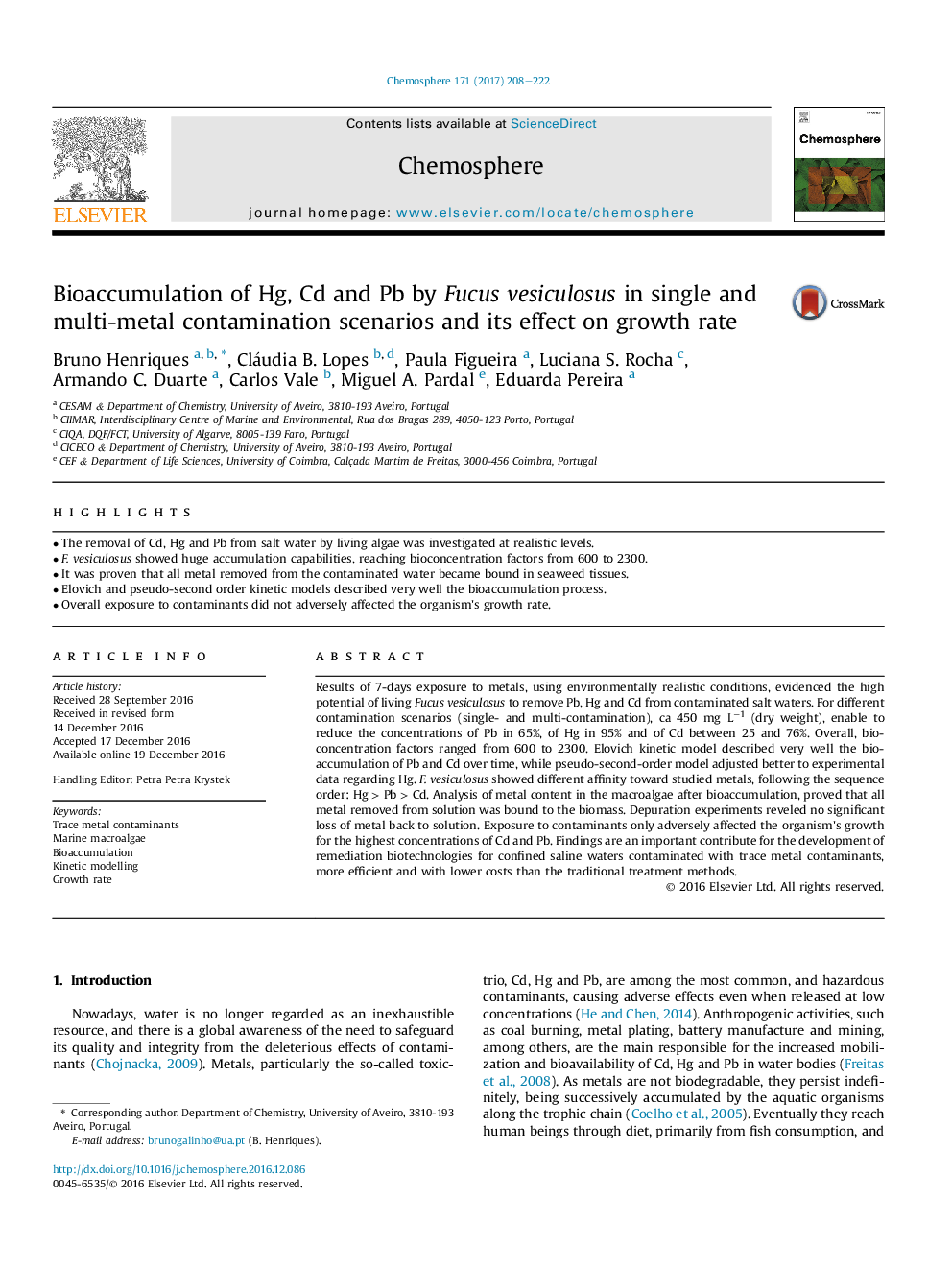| Article ID | Journal | Published Year | Pages | File Type |
|---|---|---|---|---|
| 5746386 | Chemosphere | 2017 | 15 Pages |
â¢The removal of Cd, Hg and Pb from salt water by living algae was investigated at realistic levels.â¢F. vesiculosus showed huge accumulation capabilities, reaching bioconcentration factors from 600 to 2300.â¢It was proven that all metal removed from the contaminated water became bound in seaweed tissues.â¢Elovich and pseudo-second order kinetic models described very well the bioaccumulation process.â¢Overall exposure to contaminants did not adversely affected the organism's growth rate.
Results of 7-days exposure to metals, using environmentally realistic conditions, evidenced the high potential of living Fucus vesiculosus to remove Pb, Hg and Cd from contaminated salt waters. For different contamination scenarios (single- and multi-contamination), ca 450 mg Lâ1 (dry weight), enable to reduce the concentrations of Pb in 65%, of Hg in 95% and of Cd between 25 and 76%. Overall, bioconcentration factors ranged from 600 to 2300. Elovich kinetic model described very well the bioaccumulation of Pb and Cd over time, while pseudo-second-order model adjusted better to experimental data regarding Hg. F. vesiculosus showed different affinity toward studied metals, following the sequence order: Hg > Pb > Cd. Analysis of metal content in the macroalgae after bioaccumulation, proved that all metal removed from solution was bound to the biomass. Depuration experiments reveled no significant loss of metal back to solution. Exposure to contaminants only adversely affected the organism's growth for the highest concentrations of Cd and Pb. Findings are an important contribute for the development of remediation biotechnologies for confined saline waters contaminated with trace metal contaminants, more efficient and with lower costs than the traditional treatment methods.
